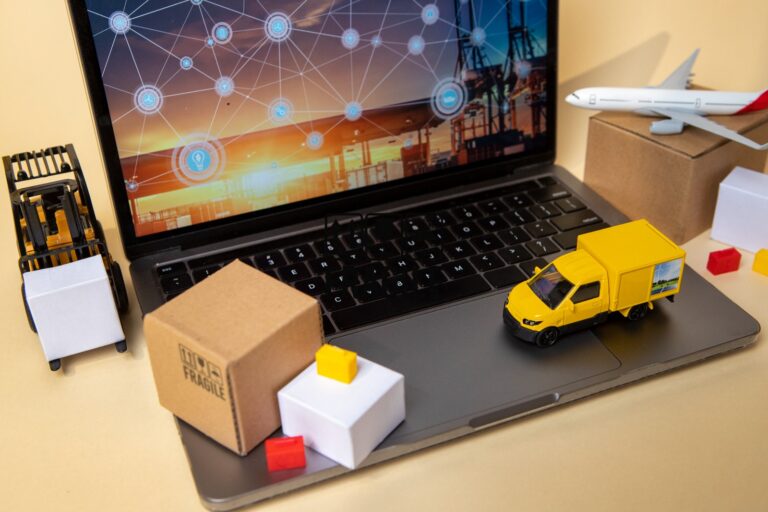The Role of Technology in Streamlining Customs Clearance: Faster, Easier Trade

Introduction
Ever wondered why your Amazon package from overseas takes ever to arrive? The answer frequently lies in customs concurrence – that complex web of paperwork and examinations that can turn a simple payload into a regulatory agony. But what if I told you that technology is still revolutionizing this age-old process, making global trade briskly, safer, and more effective than ever ahead?
From Paper Mountains to Digital Highways
The traditional customs concurrence process has been a dealer’s headache for decades. Picture this: mountains of paperwork, homemade examinations, and processes that could take weeks to complete. But technology is changing all that. Electronic data cloverleaf (EDI) systems are now perfecting process effectiveness by 50 to 60%, transubstantiating how businesses handle International Trade Finance and transnational shipments.
Companies using EDI can exchange critical information – suchlike advance payload announcements, concurrence checks, and bills of loading – incontinently and securely between consigners, consignees, and customs brokers. This is not just about speed; it’s about creating thickness in pricing and payments for duties and levies across different countries using tools like Documentary Collections and letter of credit systems.
The ASYCUDA Revolution
One name illustration of this metamorphosis is UNCTAD’s Automated System for Customs Data (ASYCUDA), which has helped over 100 countries contemporize their customs operations. This is not just software – it’s a complete digital ecosystem that is replaced outdated paper-based styles with effective, secure digital operations.
These efforts are also reinforced by Trade Finance Partnerships and platforms offering Trade Finance Advisory Services, bridging gaps in trust and funding. The results speak for themselves: Venezuela simplified its customs process from 30 steps to just seven, cutting ocean weight release time from over 30 days to two. In Rwanda, faster concurrence times have saved transporters $6 million annually. The Gambia saw a 23% increase in customs profit just one year after enforcing the system through help from a Trade Finance Company
Beyond Basic Digitization
But technology’s impact goes further than simple digitization. Artificial intelligence is now helping customs administrations identify high-threat marketable shipments before they arrive at borders. Robotic process robotization (RPA) handles routine tasks like streamlining customs checks and recycling homemade imaging, freeing up mortal coffers for more complex opinions.
Think about your last transnational online purchase – IoT detectors might have covered temperature-sensitive particulars during conveyance, ensuring they remained in optimal condition while awaiting concurrence. These smart systems produce a web of connected processes that work together seamlessly, backed by Financial Instruments for Trade like bank Guarantee or a standby letter of credit from a reliable Financial Instruments Provider.
The Bigger Picture Benefits
Here’s what really excites me about this metamorphosis – it’s not just about effectiveness. Digital customs concurrence systems are reducing corruption, streamlining philanthropic aid delivery, and combating illegal trade worldwide. When Lebanon’s Beirut harborage exploded in 2020, ASYCUDA eased the rapid-fire concurrence of over 350 holders of relief inventories.
At the same time, Risk Mitigation in Trade Finance is becoming central to managing uncertainty. Instruments like MT760, MT700, and MT799 ensure transparency and trust, especially in high-value transactions. Jamaica’s system reduced import and export permit blessings from three days to 24 hours, boosting trade by nearly 30% – made possible by Global Trade Solutions and services like letter of credit from bank platforms.
Looking Forward
The future of customs concurrence is digital, automated, and intelligent. As global trade continues to grow, these technological inventions are not just nice-to-have – they are essential for maintaining competitive advantage in an interconnected world.
This includes using pof bank verification for secured trades, Proof Of Funds checks, and Unsecured Financial Instruments to enable smoother Import Export Financing. Even systems like MT998 and MT710 are playing a role in ensuring Secure Payment Guarantees
What is your experience with transnational shipping? Have you noticed brisker delivery times lately? The answer might just be the quiet revolution passing in customs concurrence technology, supported by Trade Finance Bank solutions, trade credit finance solution strategies, and Business Introducer Opportunities to expand international reach.
